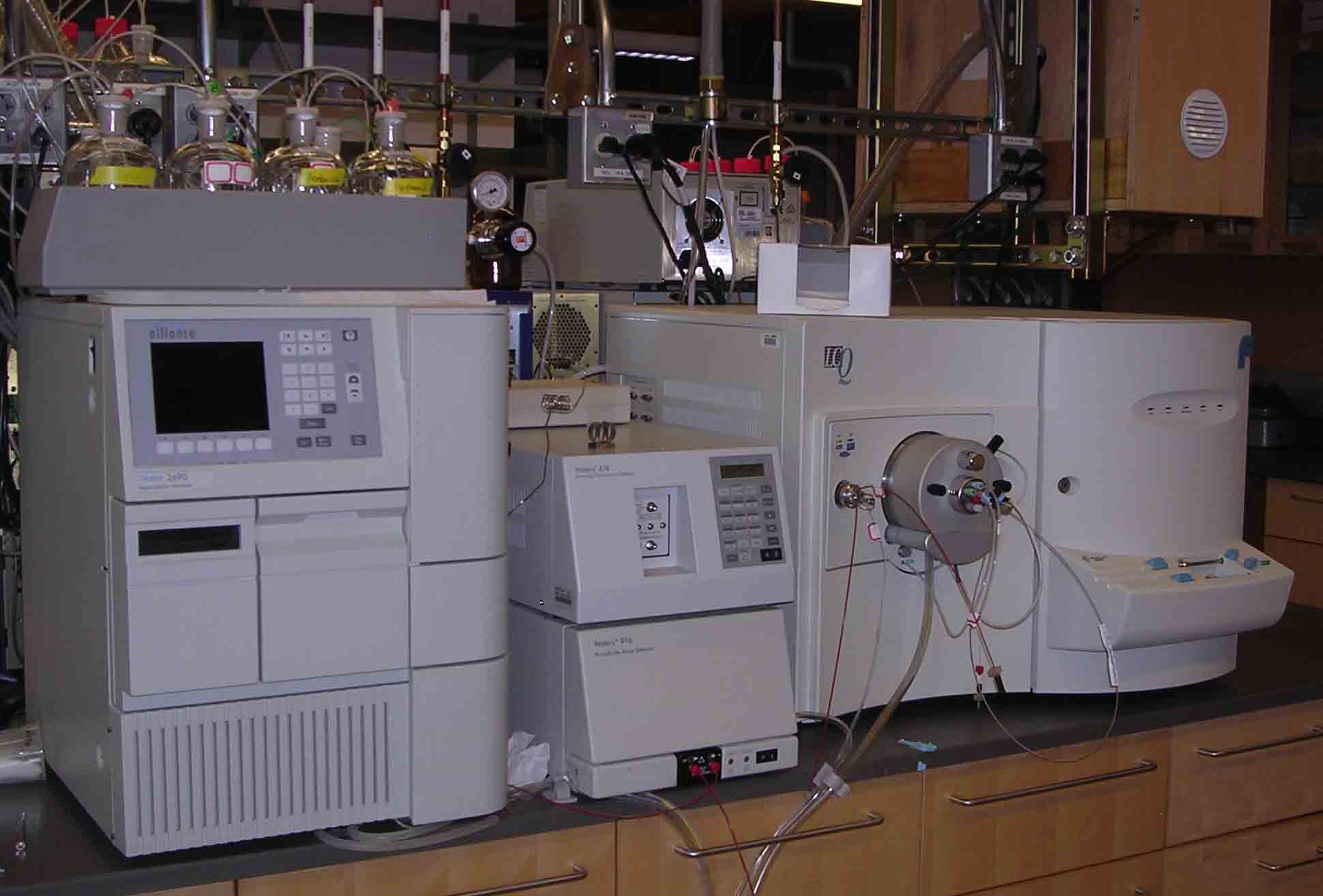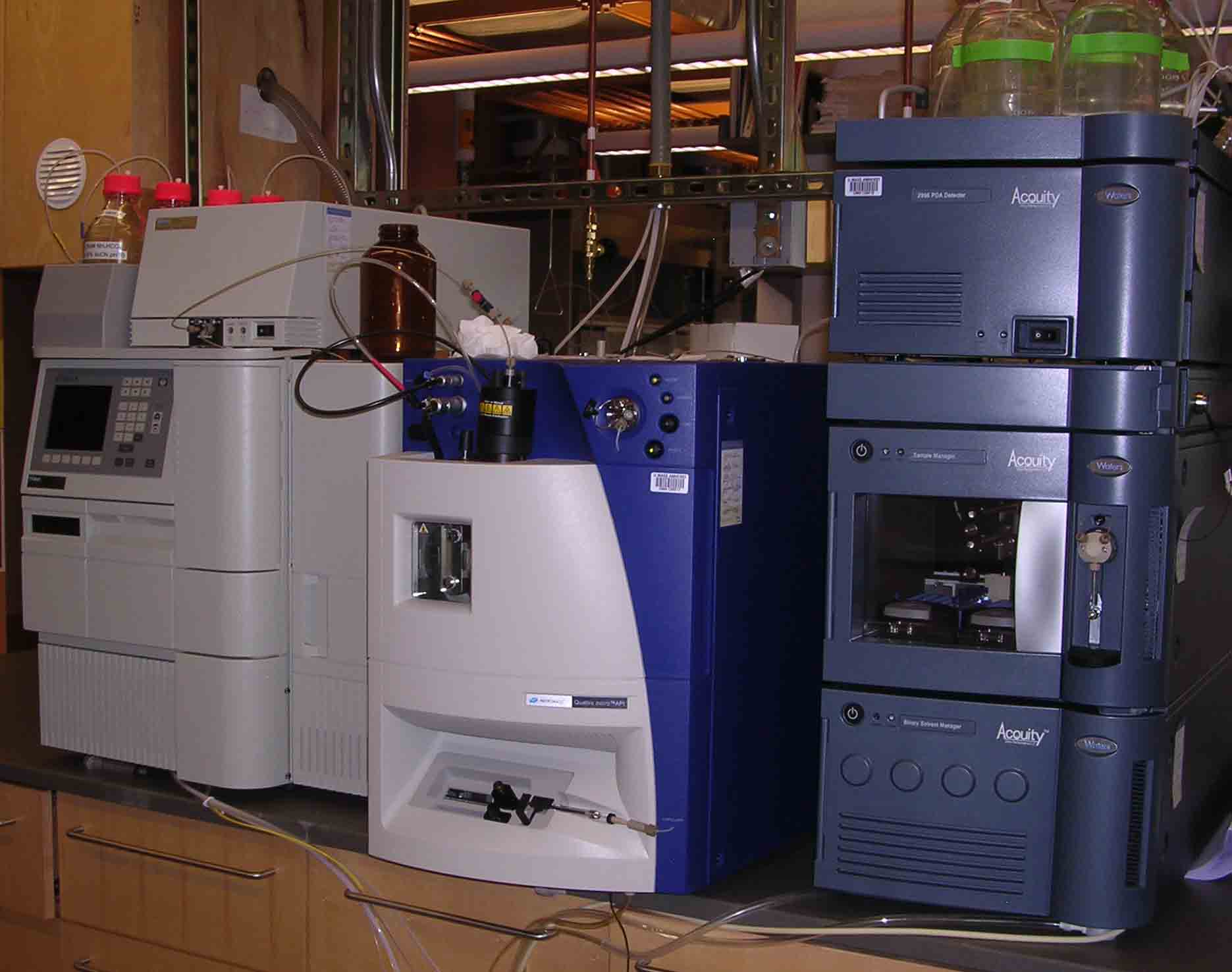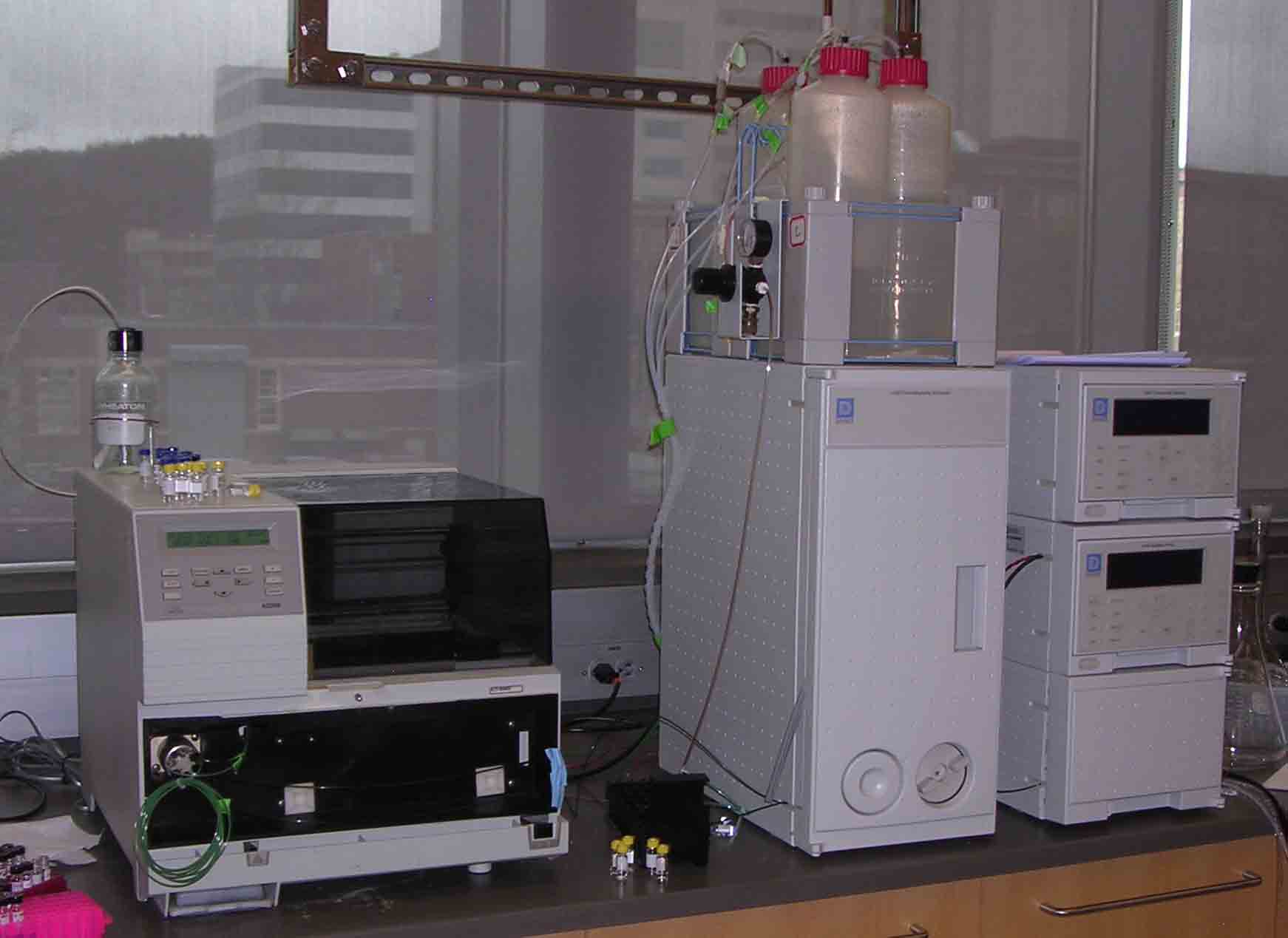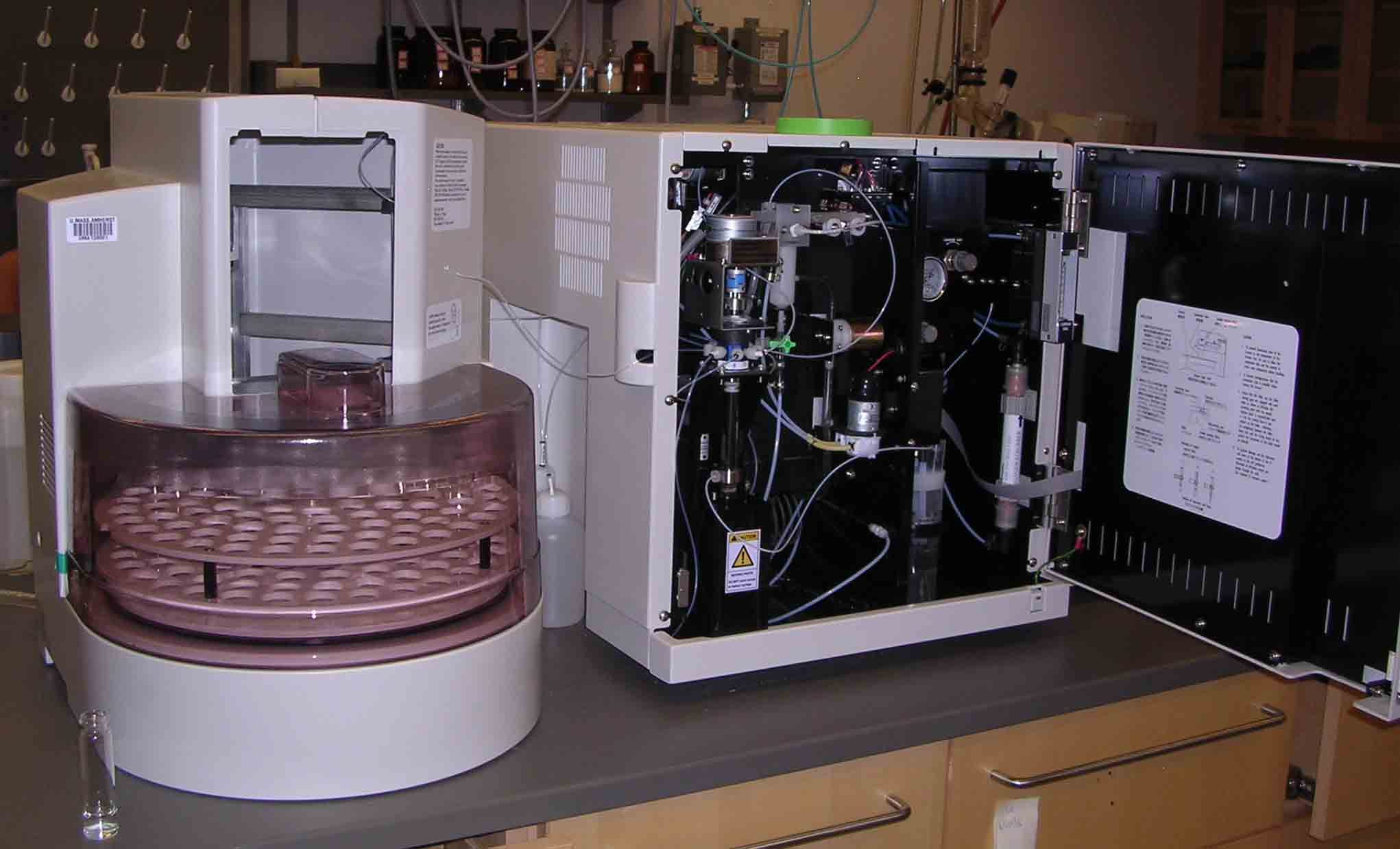
These instruments are designed to measure the small concentrations (0-5 mg/L) of carbon and nitrogen typically found in natural water and treated drinking water. Most employ an acidify-purge step to isolate inorganic carbon (e.g., carbonates), from the organic matrix, followed by IR detection of the carbon dioxide produced.
The Environmental Engineering program has five total carbon (TC) analyzers, most of which are available for general use.
The Shimadzu 5000 in 308 Elab II is most commonly used for drinking water and clean surface water samples. There is a similar instrument (model 5050) in Room 208 dedicated to groundwater research. For those interested in total nitrogen analysis, the Shimadzu TOC/V is the appropriate instrument. This is located in room 308 and can measure TN and total carbon simultaneously. All of these Shimadzu instruments are equipped with PC-based data systems, that can be used to store an re-calibrate results. A fourth Shimadzu (model 4000) is occasionally used for on-line analysis. This is a skid-mounted unit located in the corner of room 308.
The Dorhmann instrument, an ambient temperature UV/persulfate analyzer, is not commonly used at this time.. All analyzers are equipped with autosamplers except the Beckman. This last instrument is quite old, but well suited for certain specialized needs not requiring low level analysis (e.g., sludges).

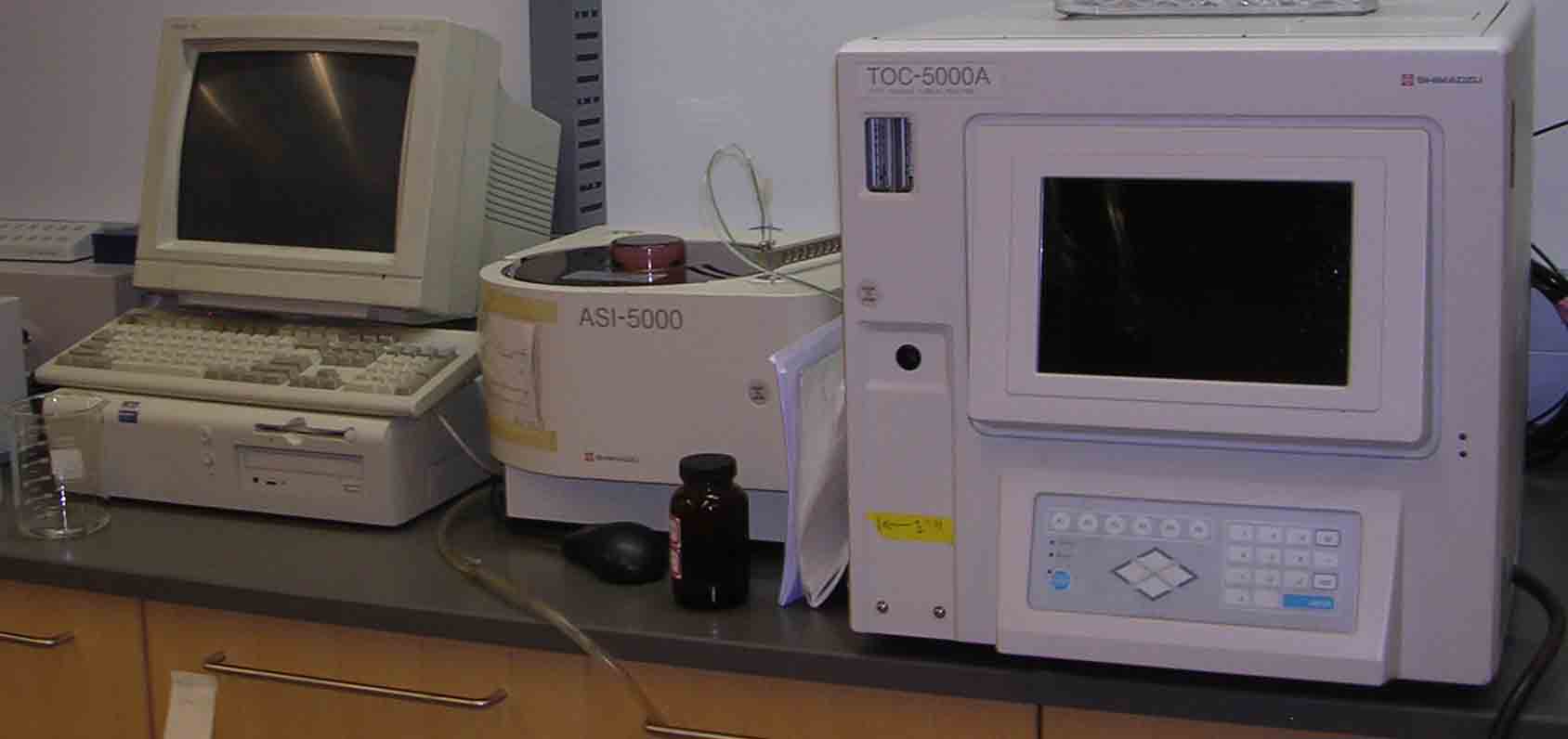
These instruments are capable of measuring the total amount of chloride, bromide and iodide in water samples (wastewater, natural water, drinking water). They all make use of a microcoulometric cell for halide analysis. The halides precipitate as AgX2 causing the soluble silver concentration to become depressed. The silver concentration is then retuned to the null level by coulometric titration. This can be very accurate, but it only gives a total halide value.
A Euroglass PC-controlled TX analyzer is available for use in 301 Elab II (Bay E). This is the more commonly used of the two. A Dohrmann DX-20 total organic halide analyzer is also available in for general use. Both analyzers rely on a similar microcoulometric cell design.
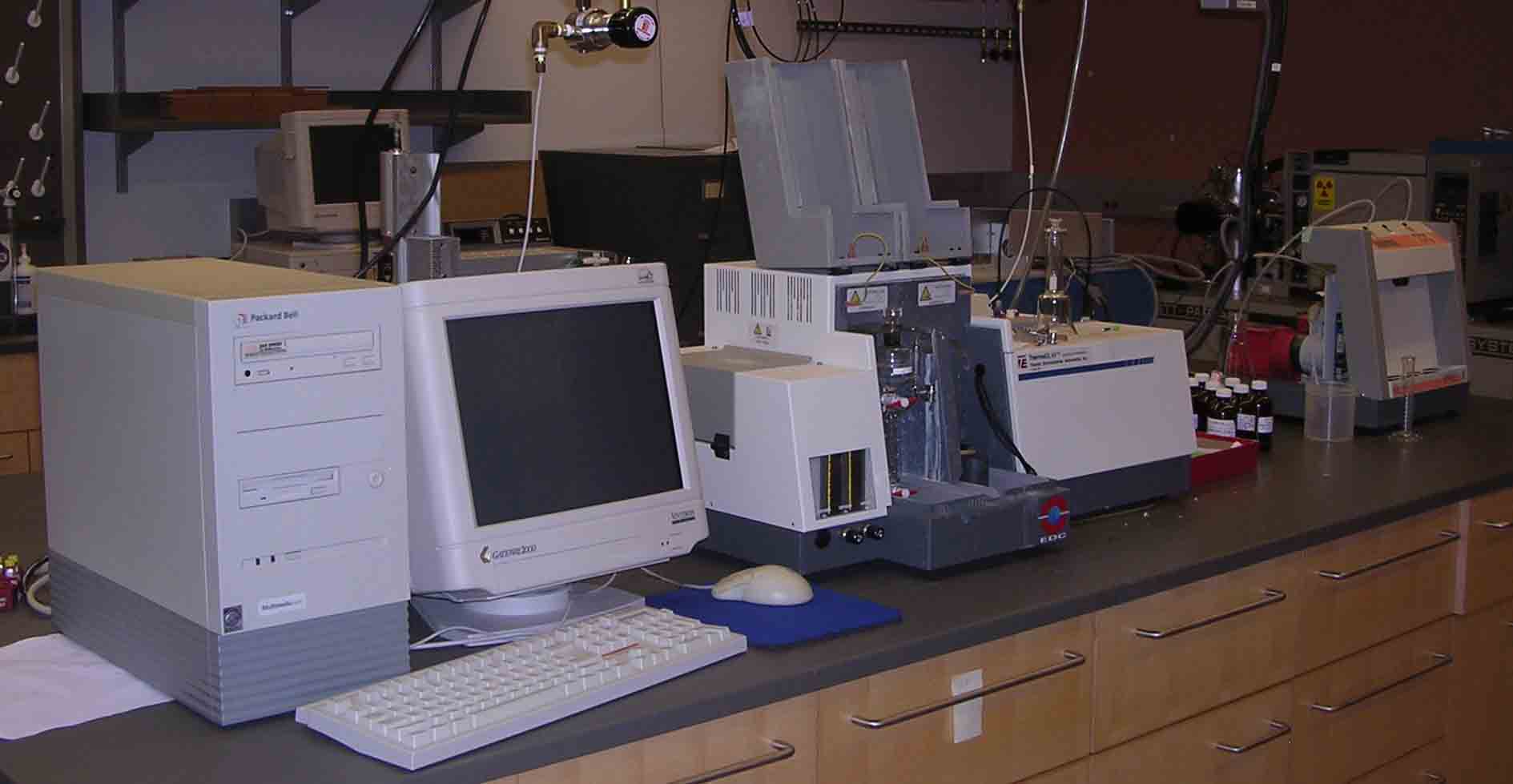
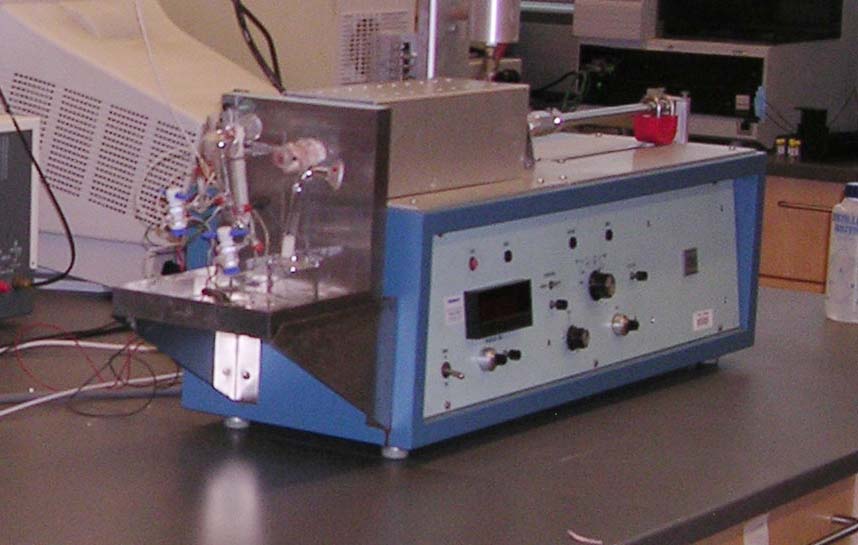
Inductively coupled plasma instruments offer a highly sensitive and robust means of analyzing for broad spectrum of metals and in some cases, non-metals in waters and wastewaters. In their most common form, they are used with a simple direct inlet to the nebulizer. They may also be coupled to an autosampler inlet for automated operation. Chromatograph inlet devices have also been used to add an additional dimension to the analysis (e.g., LC-ICP/MS). The most direct chromatographic inlet is an HPLC or IC, however, GC inlets are also feasible. Both types of instruments are capable of multi-element analysis. Sensitivity and MDLs are dependent on the particular element of interest.
Two Perkin Elmer ICP instruments are available in the EVE labs for analysis of metals and some metalloids. The emission instrument (Perkin Elmer Optima 5300 DV) located in 208 Elab II is dedicated to groundwater research. The ICP/MS ( Perkin Elmer Elan 9000 ) is in Bay E of 301 Elab II. The ICP-AES is the more easily operated and maintained of the two. For some analytes it may be less sensitive and more prone to interferences.
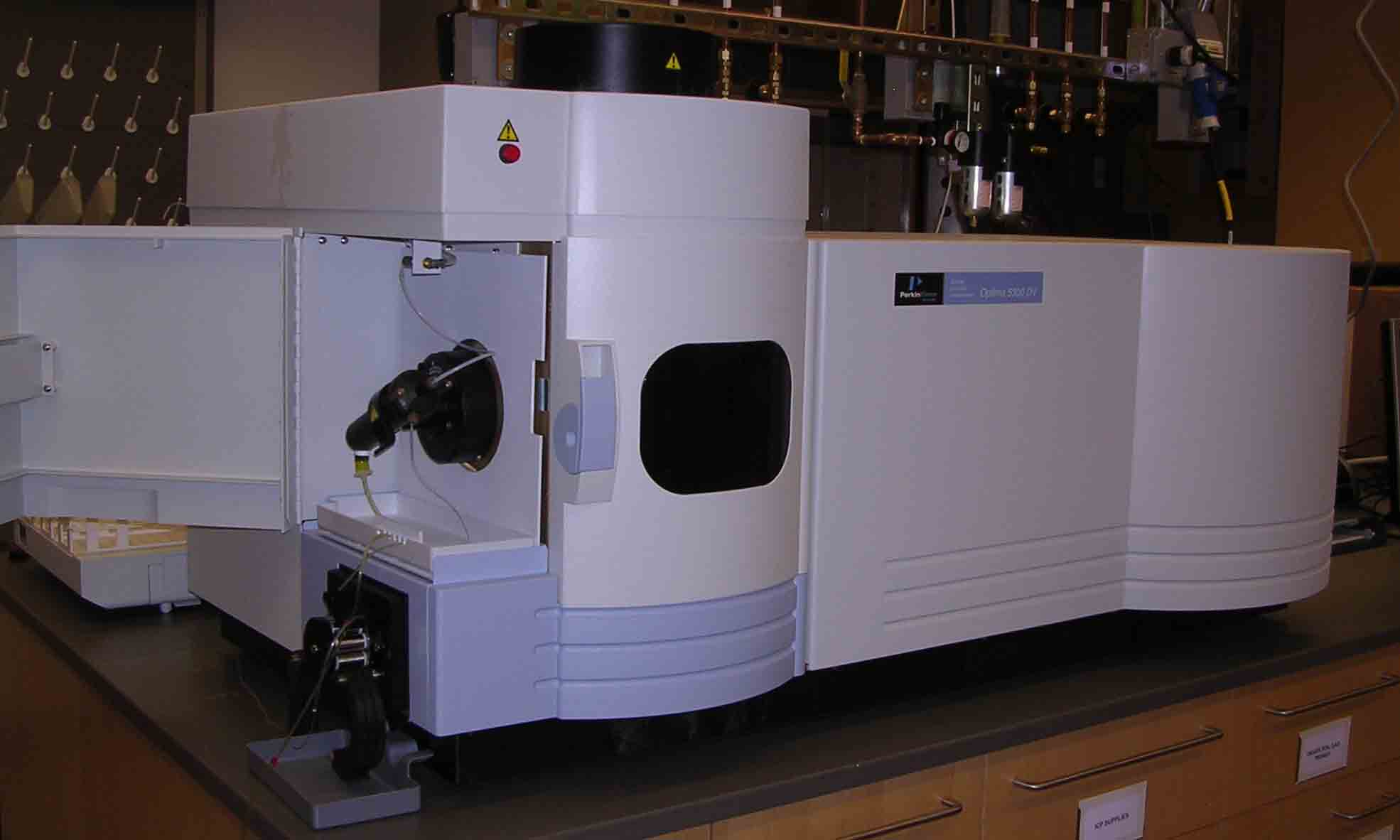
As mentioned previously, there are two Perkin Elmer ICP instruments are available for analysis of metals and some metalloids. In addition to the emission instrument (Perkin Elmer Optima 5300 DV) is an ICP-mass spectrometer (Perkin Elmer Elan 9000 ). This is located in Bay E of 301 Elab II, and is equipped with an autosampler and an HPLC inlet system. The ICP/MS is commonly used for analysis of drinking waters, surface waters, membrane reject and wastewaters. It includes a dynamic reaction cell, which allows one to eliminate certain types of interfering ions. Overall this is an extremely sensitive and powerful instrument for metals analysis.
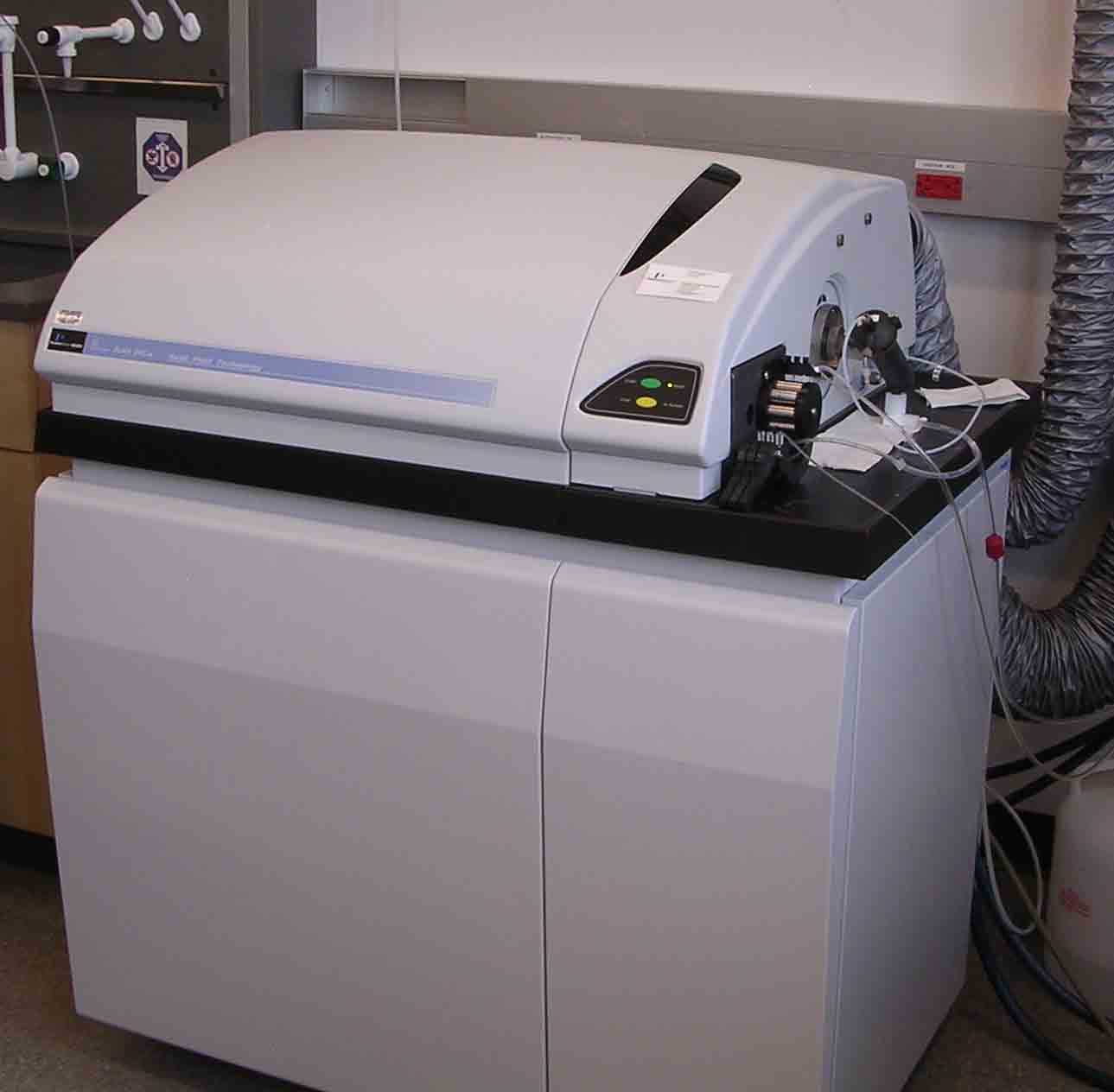
Perkin Elmer Elan 9000 ICP/MS
When equipped with an ion exchange column, liquid chromatographs (LCs) are especially well suited for analysis of iorganic ions. Recent advancements in high performance LC technology have helped to overcome some of the drawbacks that had previously limited their use, poor chromatographic resolution, detector insensitivity, incompatibility with MS. Ion chromatography, especially with MS detection has become an essential tool in environmental engineering.
Three Waters High Performance Liquid Chromatographs (HPLCs) and two Dionex Ion Chromatographs (ICs) are available in the EVE labs. Two of HPLCs are Alliance units that have autosamplers and dual pumps for binary solvent programming. Each has a diode array detector and one also has a fluorescence detector. The third instrument is a new higher pressure LC, called an Ultra Performance Liquid Chromatograph (UPLC). This is a Waters Acuity model, which promises higher resolution than the standard HPLC.
All three HPLCs can be used as an inlet to a mass spectrometer (LC/MS). The older Alliance HPLC is situated so that it can feed directly into EVE's ThermoQuest Ion Trap MS. This instrument is capable of LC/MS, LC/MS/MS up to LC/MS 10 . The other Alliance and the Acquity can feed into a triple quadrupole mass spectrometer (Waters Quattro Micro). These LC/MS combinations are frequently used for analysis of perchlorate and pharmaceuticals in water.
The Dionex ICs have a conductivity detector employing chemical suppression technology. For most inorganic analytical applications, the ICs are the appropriate choice. However, LC/MS is becoming more important in this area due to high selectivity and sensitivity. Some good examples inlcude the oxyhalide ions, perchlorate, bromate, iodate, and even bromide and iodide. These are better analyzed using the Alliance HPLC and the Quatro Micro MS due to the extremely low levels that are considered relevant in drinking waters..
